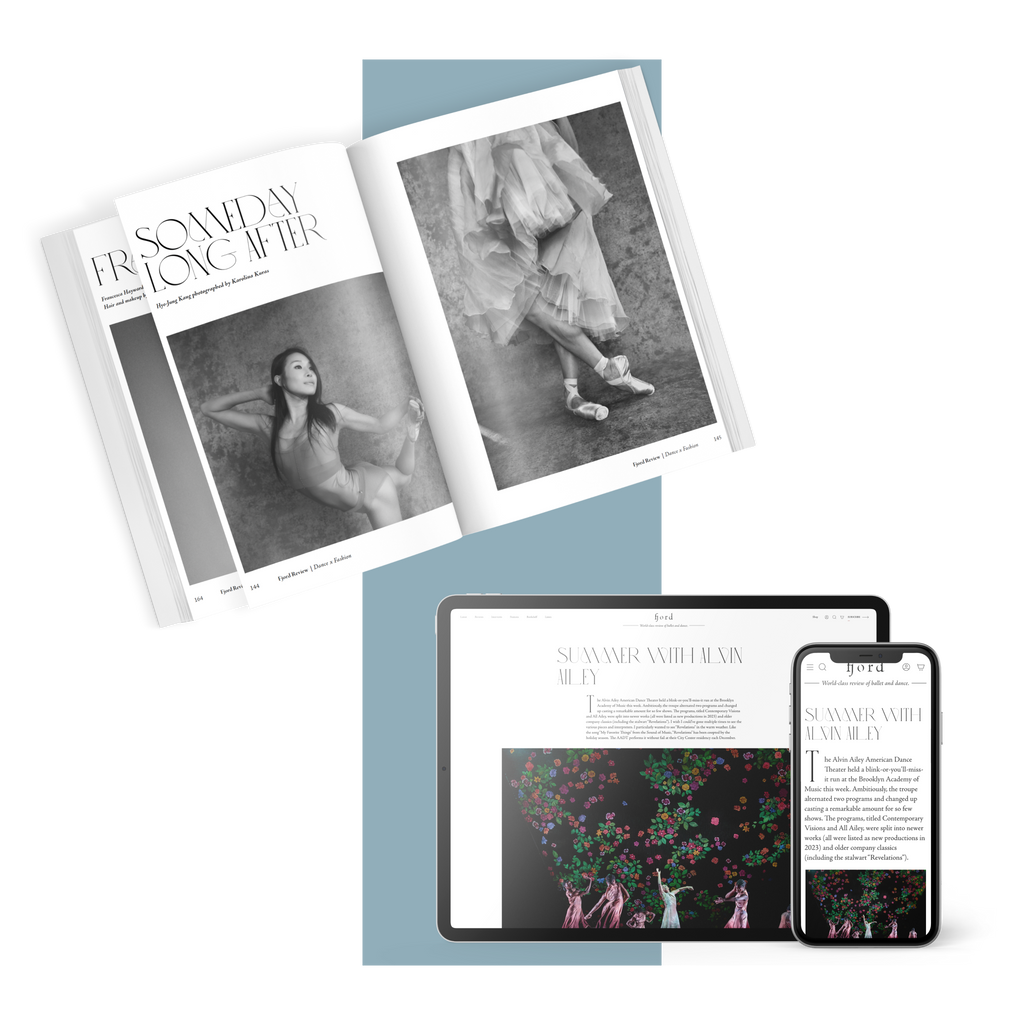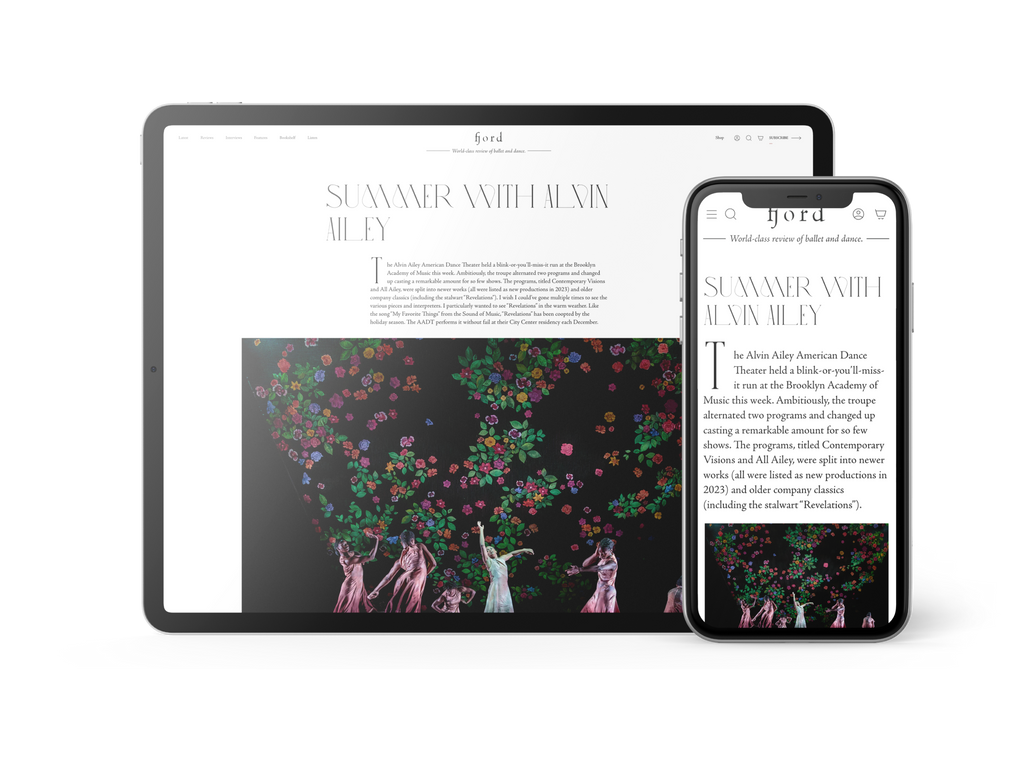Talent Time
It’s “Nutcracker” season at San Francisco Ballet—36 performances packed into three weeks—which means that the company is currently serving two distinct audiences.
Continua a leggere
World-class review of ballet and dance.
The stage is an orange box, with three simple long benches pushed against the walls. A dancer enters in silence, barefoot, dressed in a dark tunic with a collar that stands up at the neck and a bulbous skirt resembling petals of a flower. Other dancers arrive, men and women dressed alike. They take a seat, two to a bench. I imagine a Shaker gathering, austere and pensive. As the house lights go down and the music rises, the performers stand and take up a ritualistic stepping from side to side in unison. The flicking and scraping of bare feet against the floor is audible, forming a rhythm that will recur throughout the hour long “Pardes,” in this premiere performance by Israel based Vertigo Dance Company. The repetitive sway of hips as the dancers shift weight from one foot to the other is hypnotic—and a little threatening.
Performance
Place
Words

Etai Peri and dancers of Vertigo Dance Company in “Pardes” by Noa Wertheim. Photograph by Maria Baranova


“Uncommonly intelligent, substantial coverage.”
Your weekly source for world-class dance reviews, interviews, articles, and more.
Already a paid subscriber? Login
It’s “Nutcracker” season at San Francisco Ballet—36 performances packed into three weeks—which means that the company is currently serving two distinct audiences.
Continua a leggereLast week I caught up with choreographer Pam Tanowitz and Opera Philadelphia’s current general director and president, countertenor Anthony Roth Costanzo to talk about “The Seasons,” the company’s latest production premiering at the Kimmel Center’s 600-plus seat Perelman Theater on December 19.
Continua a leggereIf Notre-Dame remains one of the enduring symbols of Paris, standing at the city’s heart in all its beauty, much of the credit belongs to Victor Hugo.
Continua a leggereWhen dancer and choreographer Marla Phelan was a kid, she wanted to be an astronaut. “I always loved science and astronomy,” Phelan said.
Continua a leggere
comments